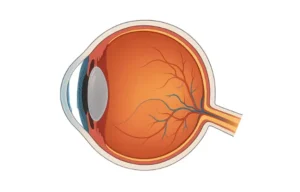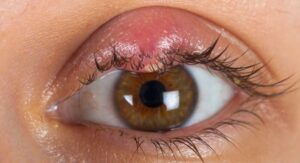
Eyeglasses, Ortho-K, or Refractive Surgery: Which Is the Optimal Choice for Myopia?
In our digital age, myopia (nearsightedness) has become a prevalent vision issue, causing significant daily inconvenience and impacting quality of
Myopia, also known as nearsightedness, is one of the most common refractive errors worldwide, affecting millions of people—especially children and young adults. This condition causes difficulty seeing distant objects clearly, which can interfere with learning, work, and daily activities. Myopia may worsen over time if not properly diagnosed and managed. So, what exactly is myopia, what causes it, can it be completely cured, and how can you prevent its progression? This article provides comprehensive information about myopia, including its symptoms, severity levels, and care and prevention tips.
Myopia is a refractive error where close objects appear clear but distant objects look blurry. It occurs when the eyeball is longer than normal or the cornea is too curved, causing light to focus in front of the retina instead of directly on it. Myopia usually develops during school age and may progress if not properly monitored and corrected.
People with myopia often struggle to see the board in class, drive safely, or observe distant objects. While it does not cause pain, myopia can significantly affect quality of life without proper correction using glasses, contact lenses, or advanced treatments such as refractive correction.
>> For those considering vision correction options, our contact lens prescription guide covers the benefits, fitting process, and proper care to help manage myopia effectively.
Myopia primarily results from structural abnormalities in the eye. When the eyeball is too long or the cornea overly curved, light rays do not focus properly on the retina, causing distant images to appear blurry. Besides genetic and hereditary factors, common causes include:
Typical symptoms of myopia include:
Early detection of these signs helps timely correction and prevents serious complications.
Myopia is classified based on the diopter (D) strength needed for clear vision. Correct classification helps eye doctors choose the most suitable treatment and reduce complications:
>> In addition to managing nearsightedness, it’s crucial to understand serious eye conditions like glaucoma and how timely treatments can protect your long-term vision.
Choosing the right treatment should always be guided by an eye specialist after a thorough eye exam and refraction test.
If you’ve ever had an eye exam and been told you have myopia (also called nearsightedness), you might have seen the code H52.1 on your medical record or insurance form. This code is part of the ICD-10 system, which is used by doctors all over the world to classify and record medical conditions.
In simple terms, ICD-10 code H52.1 is the official code for myopia. Knowing this code can help you understand your diagnosis better and make sense of your medical documents, especially if you’re dealing with insurance or planning for eye care treatment.
The myopia diagnosis code H52.1 is a part of the ICD-10 (International Classification of Diseases), used to identify nearsightedness. Myopia is a common vision problem where distant objects appear blurry while close objects remain clear.
Doctors, clinics, and insurance companies use this code to document your condition accurately. It doesn’t say how strong your glasses need to be — just that you have myopia.
Nearsightedness, or myopia, affects millions of people worldwide. The ICD-10 code H52.1 is used in medical records to represent this condition. If you’re filling out insurance forms or reviewing your health history, seeing this code simply means you’ve been diagnosed with myopia.
Understanding your ICD-10 code helps you take control of your eye health. It can also make communication easier between you and your doctor, especially if you’re planning treatment like glasses, contact lenses, or refractive correction.
Currently, myopia cannot be completely cured naturally because it is a refractive error caused by anatomical changes in the eye—specifically, an eyeball that is longer than normal or an excessively curved cornea. However, thanks to advances in medicine, there are many effective treatments that can correct and significantly improve vision, allowing people to live and work normally without relying entirely on glasses.
Treatments That Can Reduce or Eliminate the Need for Glasses:
Despite these advanced options, myopia cannot “heal itself,” and there remains a risk of myopia progression or recurrence without proper eye care. Therefore, early myopia control and regular monitoring by an eye specialist are essential.
If not detected and corrected early, myopia can lead to serious, long-term vision problems. Especially in children, rapidly progressing myopia can cause permanent eye damage. Common complications include:
Myopia in children is increasing worldwide, especially with more screen time and indoor study habits. Early detection and timely preventive measures help slow progression and protect lifelong vision. Effective prevention tips include:
By combining these practices, parents can help their children effectively manage myopia and prevent severe progression over time.
Genetic factors play a crucial role in the development and progression of myopia (nearsightedness). Many studies have shown that myopia can be inherited from parents to children, especially when both parents are myopic. However, genetics is only one part of the picture. Environmental factors and lifestyle habits also significantly influence the development of this refractive error.
Although genetic factors increase the risk of myopia, environmental factors and habits can either accelerate or slow the progression. Children who spend more time outdoors exposed to natural light, participate in outdoor activities, and maintain healthy study habits have a lower risk of developing severe myopia.
While genetic predisposition cannot be changed, preventive measures can reduce the risk and progression of myopia, such as:
Myopia is a common refractive error that does not cause pain but, if left unmanaged, can lead to long-term vision problems. Proper eye care is essential to maintain and protect vision and prevent complications. Here are some useful tips for effective myopia management:
Proper eye care helps maintain vision, reduce the risk of myopia-related complications, and ensure long-term eye health.
>> Discover more articles about eye disease treatments regularly updated by the specialist doctors team at the European Eye Center.
Myopia (nearsightedness) is one of the most common refractive errors, and many people have questions about how to manage, treat, and prevent it. Below are some frequently asked questions and answers to help you better understand myopia:

In our digital age, myopia (nearsightedness) has become a prevalent vision issue, causing significant daily inconvenience and impacting quality of

What is Dry Eye? Dry eye disease, also known as keratoconjunctivitis sicca, is far more than just a momentary feeling

When diagnosed with Diabetic Retinopathy, one of the biggest questions patients and their families ask is: “How will I be

The retina, a thin and sensitive layer of nerve tissue at the back of the eye, plays a pivotal role

Are you dealing with an annoying, red, and painful lump on your eyelid? That could very well be a stye

Swimming is one of the most beloved physical activities, offering both stress relief and overall health benefits. However, for those